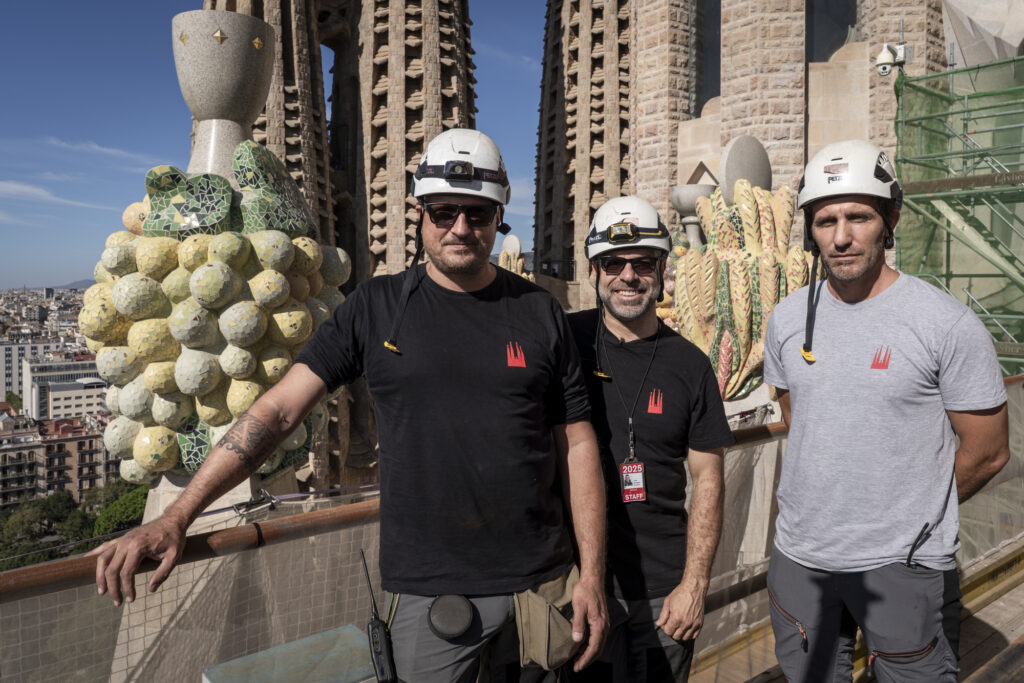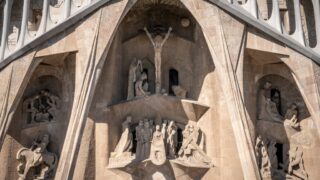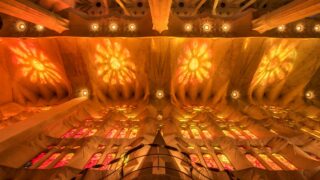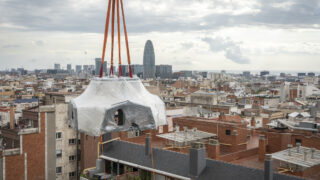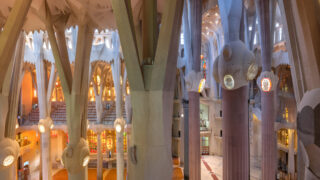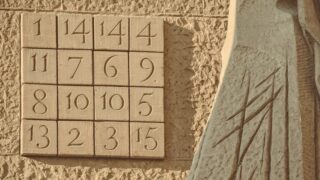At nearly 200 meters above the ground, crane operators Joan Montoya, Rufino Galán and José Encina play a key role in the Sagrada Família towering up into the Barcelona sky. With precise movements and millimetric coordination, they move and place huge pieces that bring Gaudí's dream to life. They have been working together for almost two decades, sharing manoeuvres, challenges, and anecdotes. Over the years, they have witnessed the Basilica transform from a structure without roofs to one with five towers, now anticipating the completion of the 172.5 metre tower of Jesus Christ in 2026, which will become the temple’s tallest. Below you can get a behind-the-scenes insight into a day in their life:
Upwards
The three crane operators show up for work at the Sagrada Família at half-past seven in the morning. Before climbing the cranes, they hold a technical meeting with Jaume Oromí, from the building department and head of auxiliary resources, to assign the day’s tasks. Today is a big day: one of the arms that will form part of the cross of the tower of Jesus Christ must be moved 54 metres, from the space prepared on the roofs of the central nave where the finishing touches have been made, to the transept on the Passion façade side, where it will remain until it is put into position. This movement is being made to clear space to assemble the new pieces of the cross that will be arriving over the coming weeks. "It’s not repetitive work. Every day brings something new", says Rufino.
For today’s shift, Joan Montoya has been assigned to the crane built on the tower of Jesus Christ, Spain’s tallest. Rufino Galán is in charge of the other crane, located in the materials yard, where the Chapel of the Assumption and a section of the adjacent cloister are being built, while José Encina oversees supervision and coordination tasks. A third crane is currently being built to be used for the tower of Jesus Christ and the future Glory façade. «We have a weekly schedule», explains Encina. «Every week one of us operates the main crane and we work in shifts to ensure that there is no downtime. When one operator comes down for lunch, the other goes up. So, the work doesn’t stop».
At eight in the morning, Montoya climbs up the crane. It takes about twenty minutes to get from the temple floor to the cabin. Three successive freight elevators take him to an external metal walkway located at a height of 130 metres that connects the tower with the crane. From there, he still has to climb the interior crane ladder until he reaches the cabin. When he finallysits in the seat, the Sagrada Família stretches out beneath his feet and the sea can be seen on the horizon. “We have the best views of Barcelona”, he says.
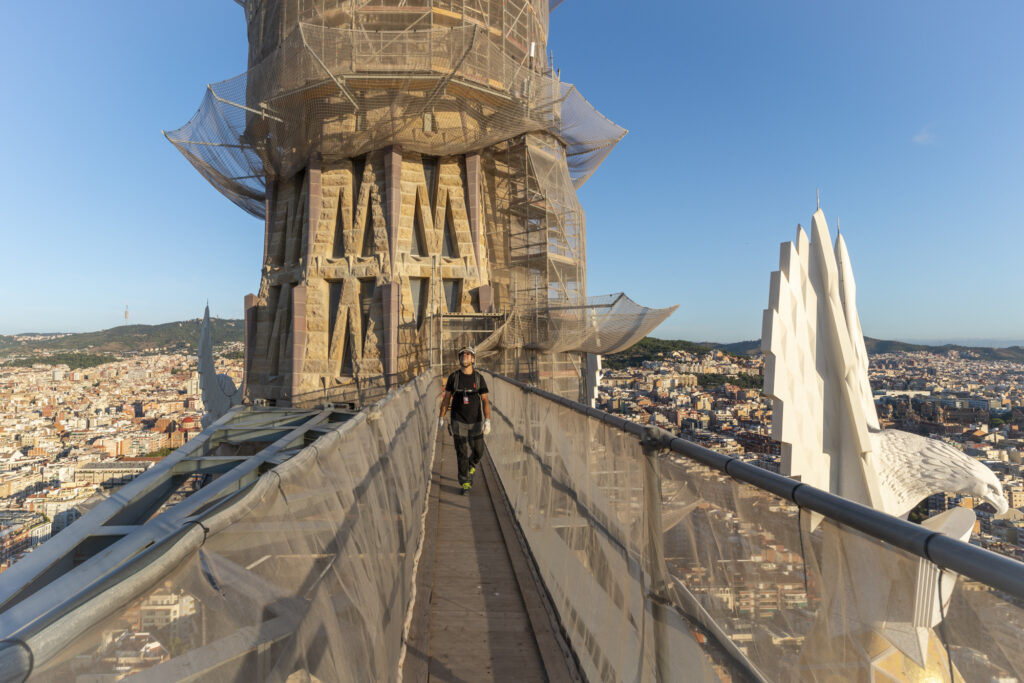
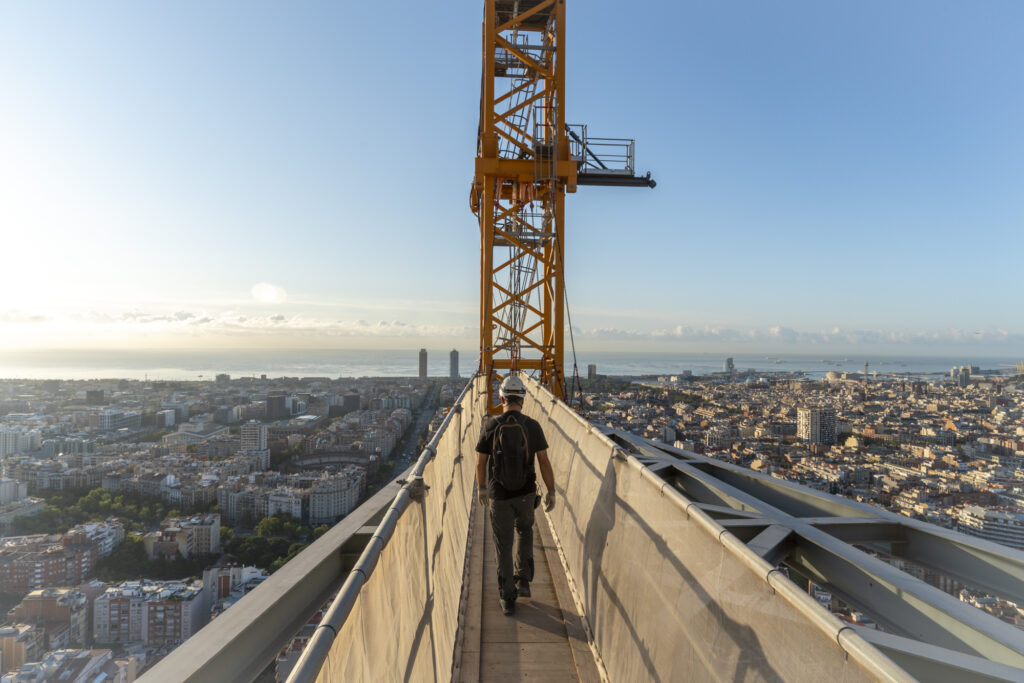
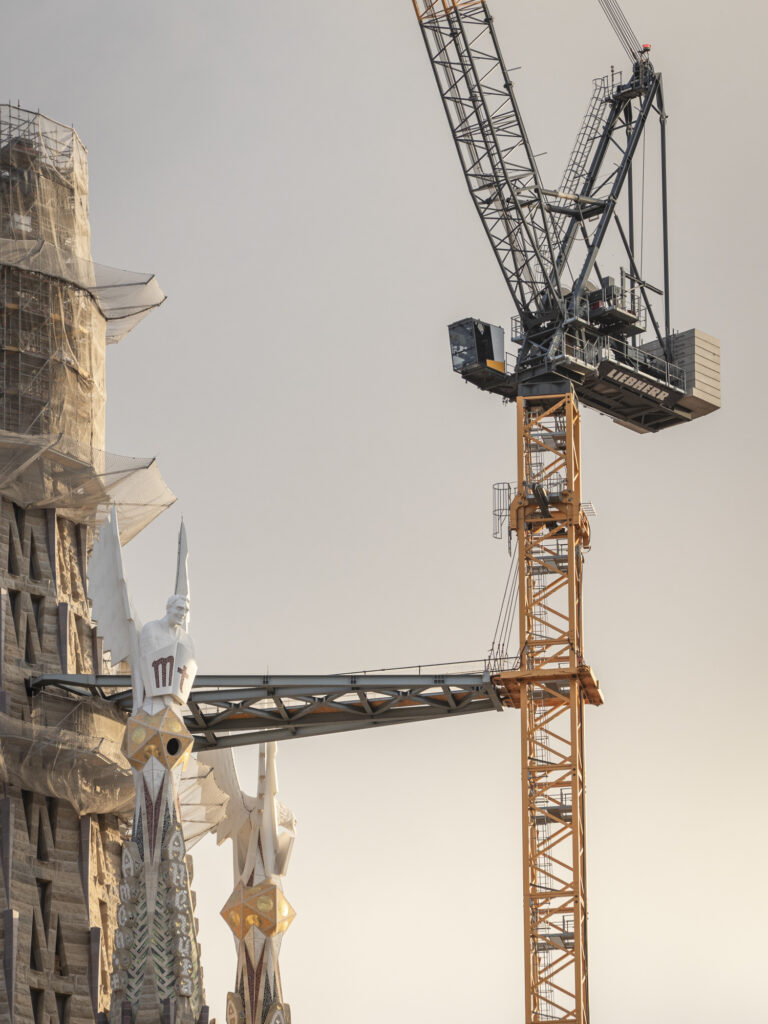
Metal walkway connecting the crane to the tower of Jesus Christ, used by the crane operators to access the cabin.
Precision manoeuvres
In the 54-metre-high workspace, Jaume Oromí observes and gives instructions via walkie-talkie. The first arm of the future cross of Jesus Christ must be moved with great precision. Montoya follows each instruction calmly. The piece rises slowly over the towers to avoid hitting with any architectural elements. The scene is impressive: the white arm of the cross being moved across the blue sky of Barcelona.
This manoeuvre is made possible thanks to the new crane built in May 2024, a German-engineered structure with a folding jib that offers greater freedom of movement while improving safety. In fact, unlike traditional horizontal tower cranes, this is a one-of-a-kind model in Spain that allows for performing very precise manoeuvres in vertical and confined spaces. It weighs around 330 tonnes, can reach a height of up to 200 metres, and is equipped with a black box, similar to those on airplanes, which records all movements in real time. This constant control is of utmost importance in such a dynamic environment, where safety is paramount to ensure the work can coexist with visitors and the city alike.
For this reason, all three crane operators were sent to Germany to take a specialized simulation course for this crane model. «It’s a very powerful machine that you need to be extremely familiar with. It gives you freedom of movement, but it also calls for a great deal of responsibility», Montoya points out. Fifteen minutes later, the arm of the cross is placed in the desired location.
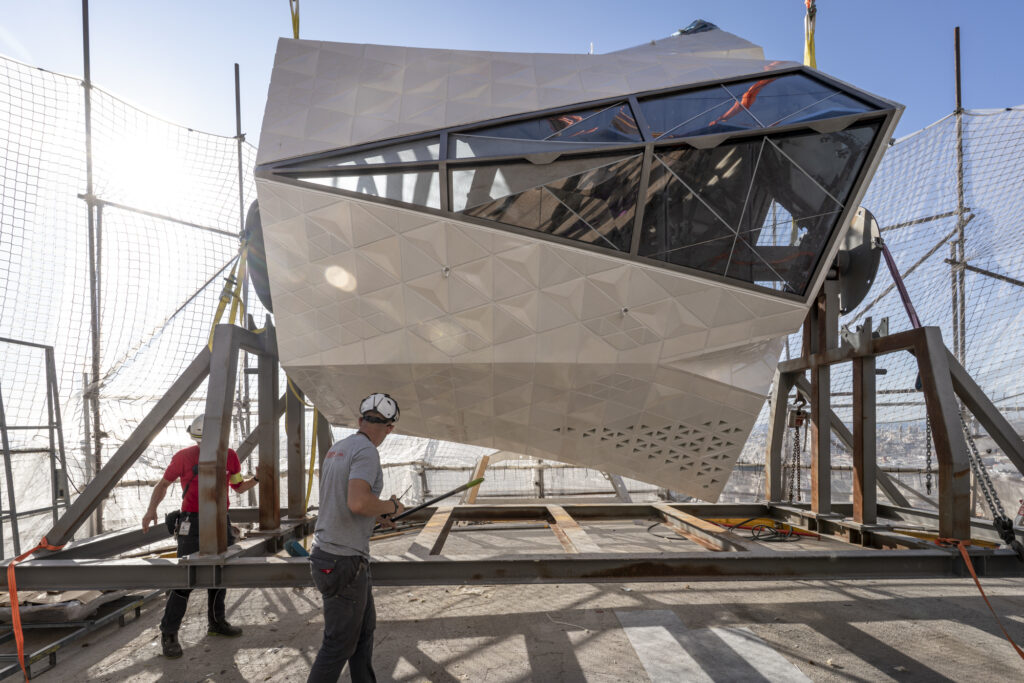
One of the arms of the cross of Jesus Christ at the 54-metre workspace before the movement is performed
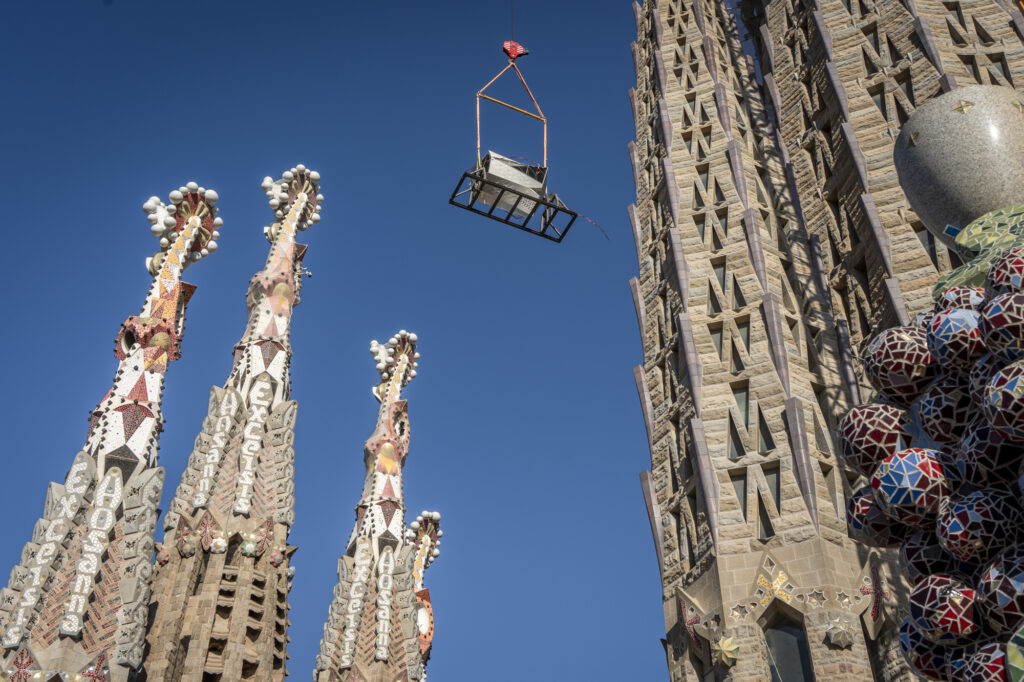
The arm of the cross rising above the towers
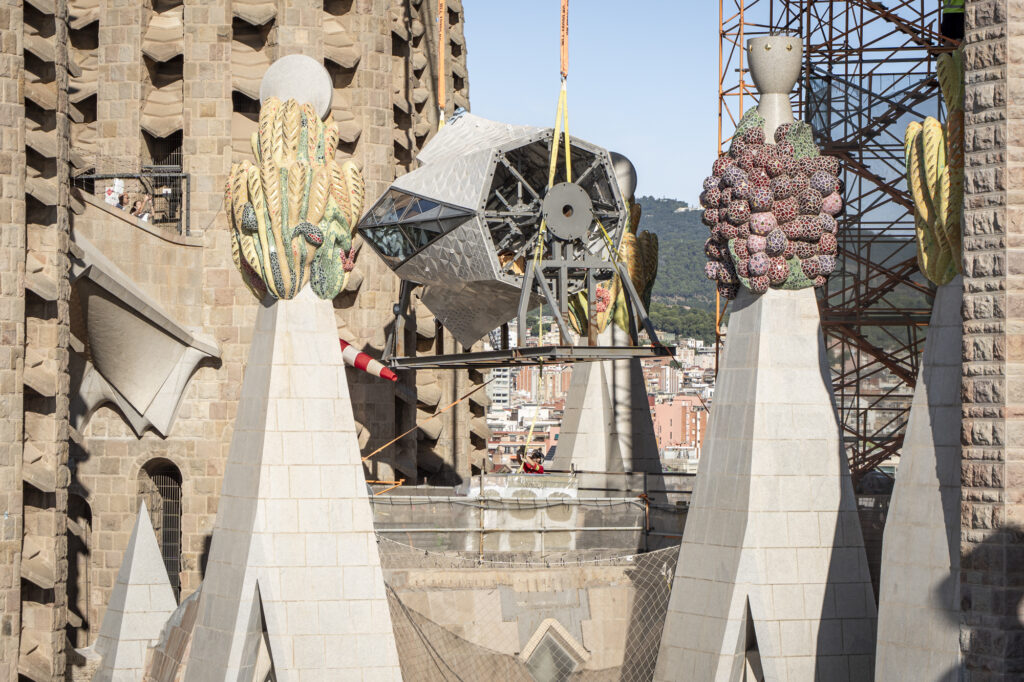
The piece arriving at the Passion side transept, where it will remain until it is put into position
«Gaudí already sensed that the tools of his time would evolve», he reflects. «The tower of Jesus Christ couldn’t have been built using the systems of that time. But he himself wrote that we would need to evolve with the times. «And that’s what we do: bring his vision to life with the tools of today», Montoya explains.
Mid-morning, Montoya gets down from the crane and joins his colleagues in the breakfast area. They talk about work, but also about life: they have been colleagues for over eighteen years by this stage. In fact, Encina, the temple’s most veteran crane operator, has been working here for 22 years. «It’s not just a run-of-the-mill job. Each piece is valuable, and our mission is to place it in its exact spot. We’re proud to do it but it comes with pressure», says Galan, and adds: «You look back and remember that stone you placed, which sparks a memory for you».
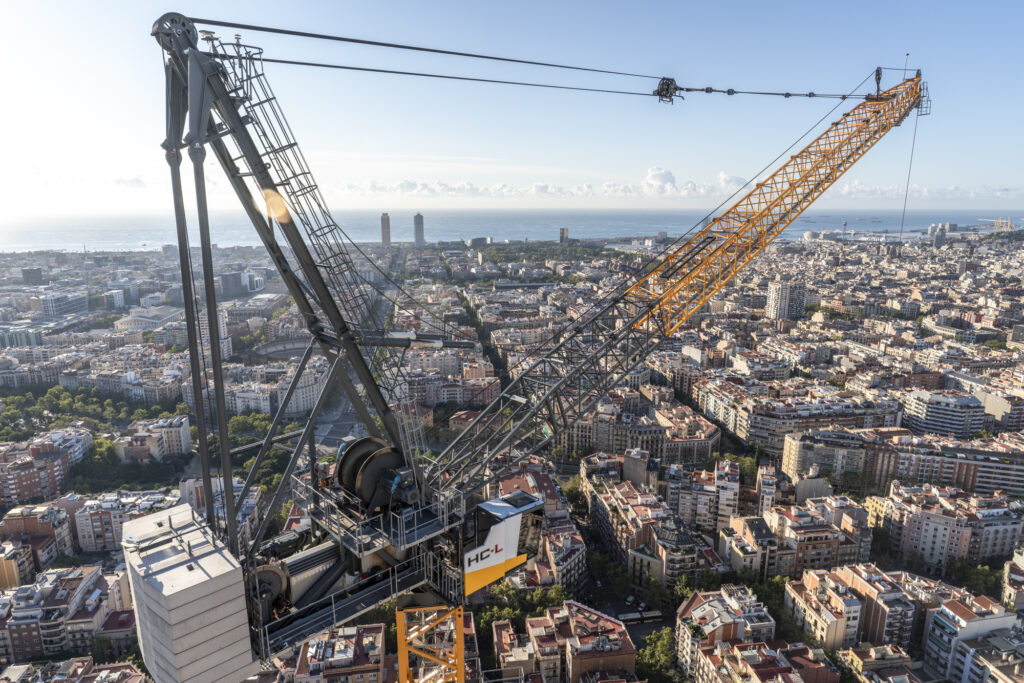
The tower of Jesus Christ crane is a one-of-a-kind model in Spain: it’s the tallest on the peninsula and has a luffing jib that offers greater freedom of movement and allows it to reach a height of 200 metres.
«It’s not just a run-of-the-mill job. Each piece is valuable, and our mission is to place it in its exact spot»
Over the years, the three experienced colleagues have faced many challenges together: placing the star on the tower of Mary (the first tower they completed), the figures of the four Evangelists, or the first panels of the tower of Jesus Christ, weighing 23 tonnes. «We’re only doing our bit», they say. They also recall some anecdotes: the day they saw the snowfall in Barcelona from the cabin, or that night during La Mercè festival when Galan was in charge of the light projection on the Nativity façade. «We have seen sunsets, lightning, rainbows... «These are unique moments that make you realise where you are», they remember.
And when in a few years the cranes start being dismantled, they admit it’ll feel strange, but at the same time they hope that day will come. «It’ll be wonderful when we can remove them and marvel at the Basilica, because that means we’ll have finished the job», they state.
In the late afternoon, all three come down from working at height. With their feet on solid ground, another day draws to an end for the Sagrada Família crane operators. Today, however, not everyone is quite finished work. On the occasion of the Diada (National Day of Catalonia), one of them stays behind to hoist the Senyera flag on the Passion façade. A simple gesture that rounds off another proud day at work.
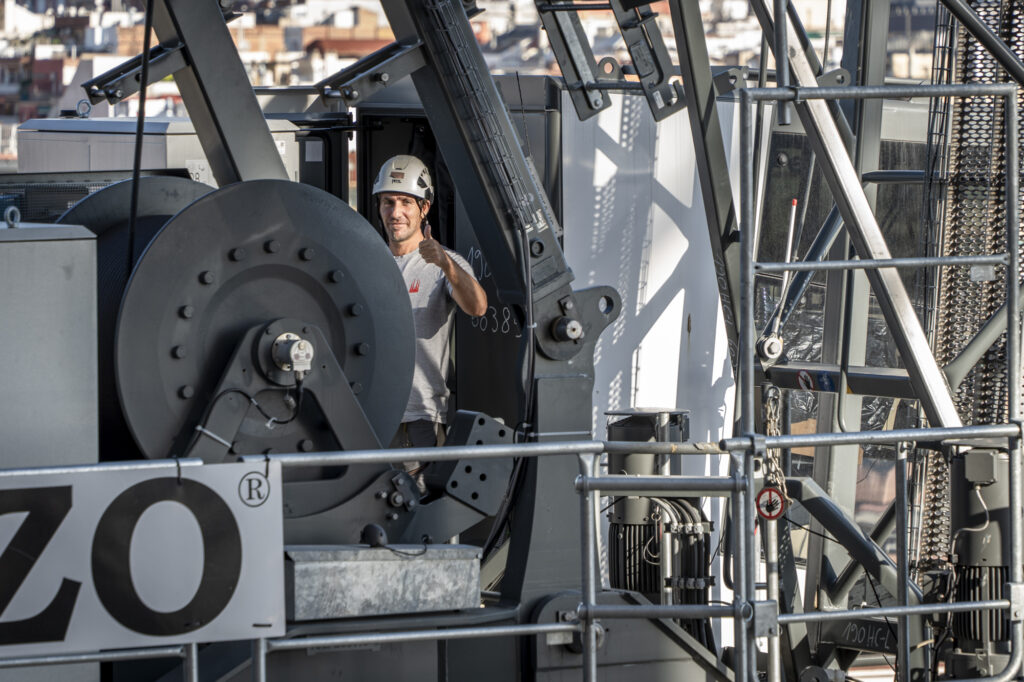
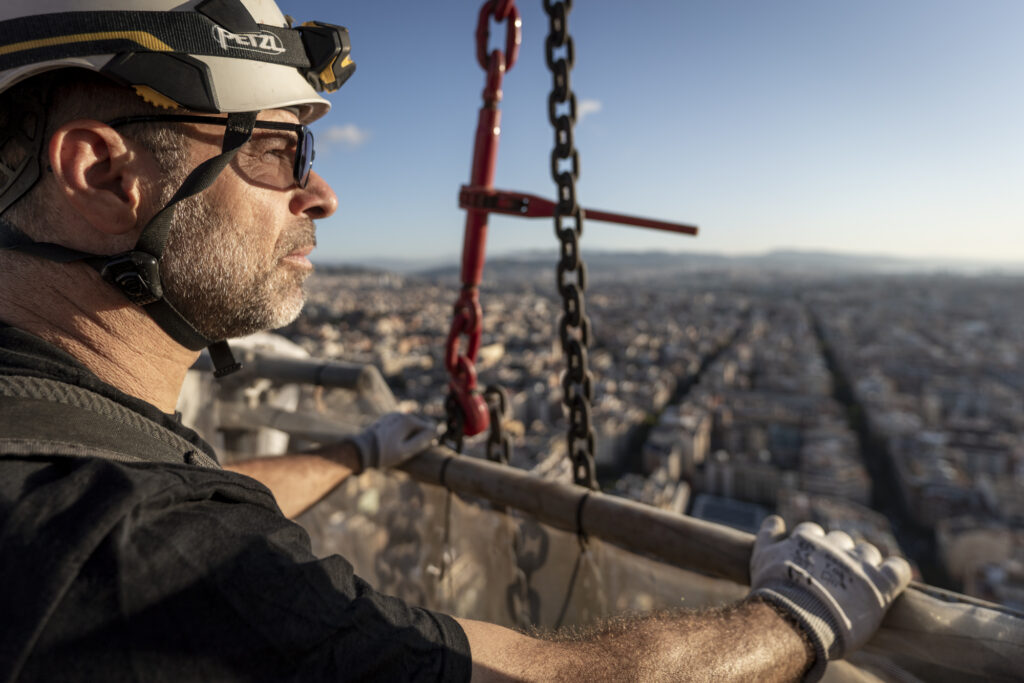
Rufino Galán in the crane cabin of the Chapel of the Assumption (left). Juan Montoya taking in the views from the footbridge (right).

